Study on Microstructure and Properties of Additive-Manufactured TC4ELI+TC21 Titanium Alloy Gradient Composite Structures
Abstract
:1. Introduction
2. Experiment
2.1. Materials
2.2. Preparation
2.3. Characterization
3. Results and Discussion
3.1. Microstructure and Composition Evolution
3.2. Mechanical Properties and Fracture Behaviour
4. Conclusions
Author Contributions
Funding
Institutional Review Board Statement
Informed Consent Statement
Data Availability Statement
Conflicts of Interest
References
- Su, Y.; Chen, B.; Tan, C.; Song, X.; Feng, J. Influence of composition gradient variation on the microstructure and mechanical properties of 316 L/Inconel718 functionally graded material fabricated by laser additive manufacturing. J. Mater. Process. Technol. 2020, 283, 116702. [Google Scholar] [CrossRef]
- He, B.; Wu, D.; Pan, J.; Yang, G. Effect of heat treatment on microstructure and mechanical properties of laser deposited TA15/Ti2AlNb gradient composite structures. Vacuum 2021, 190, 110309. [Google Scholar] [CrossRef]
- Reichardt, A.; Shapiro, A.A.; Otis, R.; Dillon, R.P.; Borgonia, J.P.; McEnerney, B.W.; Hosemann, P.; Beese, A.M. Advances in additive manufacturing of metal-based functionally graded materials. Int. Mater. Rev. 2020, 66, 1–29. [Google Scholar] [CrossRef]
- Lu, H.Z.; Liu, L.H.; Yang, C.; Luo, X.; Song, C.H.; Wang, Z.; Wang, J.; Su, Y.D.; Ding, Y.F.; Zhang, L.C.; et al. Simultaneous enhancement of mechanical and shape memory properties by heat-treatment homogenization of Ti2Ni precipitates in TiNi shape memory alloy fabricated by selective laser melting. J. Mater. Sci. Technol. 2022, 101, 205–216. [Google Scholar] [CrossRef]
- Saleh, B.; Jiang, J.; Fathi, R.; Al-hababi, T.; Xu, Q.; Wang, L.; Song, D.; Ma, A. 30 Years of functionally graded materials: An overview of manufacturing methods, Applications and Future Challenges. Compos. Part B Eng. 2020, 201, 108376. [Google Scholar] [CrossRef]
- Chen, T.; Lu, H.Z.; Cai, W.S.; Liu, L.H.; Wang, Z.; Yang, C. Ultrastrong Ti–6Al–4V composite with hierarchical microstructure through two-step ball milling and pressureless sintering. Scr. Mater. 2023, 236, 115676. [Google Scholar] [CrossRef]
- Li, P.; Cai, R.; Yang, G.; Wang, T.; Han, S.; Zhang, S.; Wang, W.; Meng, Q. Mechanically strong, stiff, and yet ductile AlSi7Mg/graphene composites by laser metal deposition additive manufacturing. Mater. Sci. Eng. A 2021, 823, 141749. [Google Scholar] [CrossRef]
- Sibisi, P.N.; Popoola, A.P.I.; Arthur, N.K.K.; Pityana, S.L. Review on direct metal laser deposition manufacturing technology for the Ti-6Al-4V alloy. Int. J. Adv. Manuf. Technol. 2020, 107, 1163–1178. [Google Scholar] [CrossRef]
- Schwendner, K.I.; Banerjee, R.; Collins, P.C.; Brice, C.A.; Fraser, H.L.J.S.M. Direct laser deposition of alloys from elemental powder blends. Scr. Mater. 2001, 45, 1123–1129. [Google Scholar] [CrossRef]
- Luo, X.; Song, T.; Gebert, A.; Neufeld, K.; Kaban, I.; Ma, H.; Cai, W.; Lu, H.; Li, D.; Li, N.; et al. Programming Crystallographic Orientation in Additive-Manufactured Beta-Type Titanium Alloy. Adv. Sci. 2023, 10, e2302884. [Google Scholar] [CrossRef]
- Tan, C.; Sun, Q.; Xiao, L.; Zhao, Y.; Sun, J. Characterization of deformation in primary α phase and crack initiation and propagation of TC21 alloy using in-situ SEM experiments. Mater. Sci. Eng. A 2018, 725, 33–42. [Google Scholar] [CrossRef]
- Li, W.; Yan, L.; Karnati, S.; Liou, F.; Newkirk, J.; Taminger, K.M.B.; Seufzer, W.J. Ti-Fe intermetallics analysis and control in joining titanium alloy and stainless steel by Laser Metal Deposition. J. Mater. Process. Technol. 2017, 242, 39–48. [Google Scholar] [CrossRef]
- Abioye, T.E.; Farayibi, P.K.; Kinnel, P.; Clare, A.T. Functionally graded Ni-Ti microstructures synthesised in process by direct laser metal deposition. Int. J. Adv. Manuf. Technol. 2015, 79, 843–850. [Google Scholar] [CrossRef]
- Boyer, R.R. An overview on the use of titanium in the aerospace industry. Mater. Sci. Eng. A 1996, 213, 103–114. [Google Scholar] [CrossRef]
- Stephenson, P.L.; Haghdadi, N.; DeMott, R.; Liao, X.Z.; Ringer, S.P.; Primig, S. Effect of scanning strategy on variant selection in additively manufactured Ti-6Al-4V. Addit. Manuf. 2020, 36, 101581. [Google Scholar] [CrossRef]
- Zhimin, H.; Yongqing, Z.; Weidong, Z.; Xiaonan, M.; Wenguang, L.; Pengsheng, Z. Effect of Heat Treatment on the Microstructure Development of TC21 Alloy. Rare Met. Mater. Eng. 2017, 46, 2087–2091. [Google Scholar] [CrossRef]
- GB/T 228.1-2010; Metallic Materials—Tensile Testing—Part 1: Method of Test at Room Temperature. General Administration of Quality Supervision, Inspection and Quarantine of the People’s Republic of China: Beijing, China, 2010.
- Shi, R.; Dixit, V.; Fraser, H.L.; Wang, Y.J.A.M. Variant selection of grain boundary α by special prior β grain boundaries in titanium alloys. Acta Mater. 2014, 75, 156–166. [Google Scholar] [CrossRef]
- Sallica-Leva, E.; Jardini, A.L.; Fogagnolo, J.B. Microstructure and mechanical behavior of porous Ti-6Al-4V parts obtained by selective laser melting. J. Mech. Behav. Biomed. Mater. 2013, 26, 98–108. [Google Scholar] [CrossRef] [PubMed]
- Elshaer, R.N. Effect of Initial α-Phase Morphology on Microstructure, Mechanical Properties, and Work-Hardening Instability During Heat Treatment of TC21 Ti-Alloy. Metallogr. Microstruct. Anal. 2022, 11, 293–308. [Google Scholar] [CrossRef]
- Lv, Z.; Ren, X.P.; Li, Z.H.; Lu, Z.M.; Gao, M.M. Effects of Two Different Cyclic Heat Treatments on Microstructure and Mechanical Properties of Ti-V Microalloyed Steel. Mater. Res. 2015, 18, 304–312. [Google Scholar] [CrossRef]
- Vrancken, B.; Thijs, L.; Kruth, J.-P.; Van Humbeeck, J. Heat treatment of Ti6Al4V produced by Selective Laser Melting: Microstructure and mechanical properties. J. Alloys Compd. 2012, 541, 177–185. [Google Scholar] [CrossRef]
- Kundu, S.; Sam, S.; Chatterjee, S. Interface microstructure and strength properties of Ti–6Al–4V and microduplex stainless steel diffusion bonded joints. Mater. Des. 2011, 32, 2997–3003. [Google Scholar] [CrossRef]
- Han, J.-C.; Xiao, S.-L.; Tian, J.; Chen, Y.-Y.; Xu, L.-J.; Wang, X.-P.; Jia, Y.; Cao, S.-Z. Microstructure characterization and tensile properties of a Ni-containing TiAl-based alloy with heat treatment. Rare Met. 2015, 35, 26–34. [Google Scholar] [CrossRef]
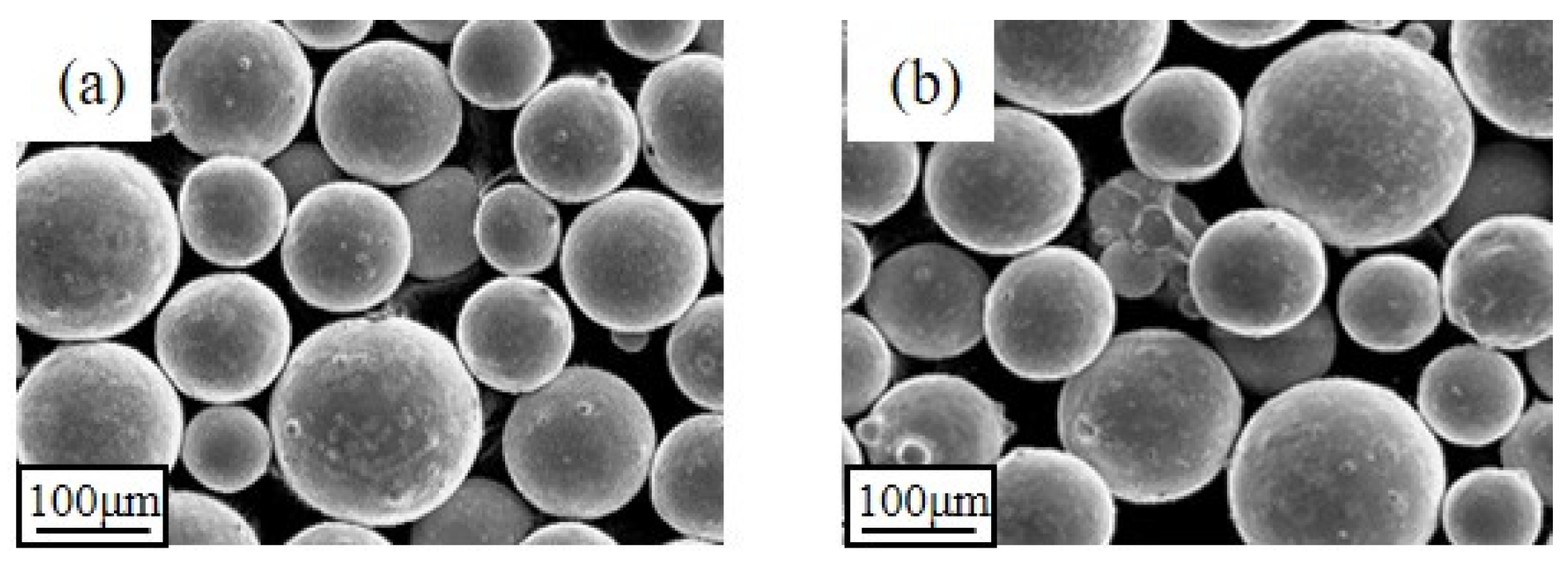

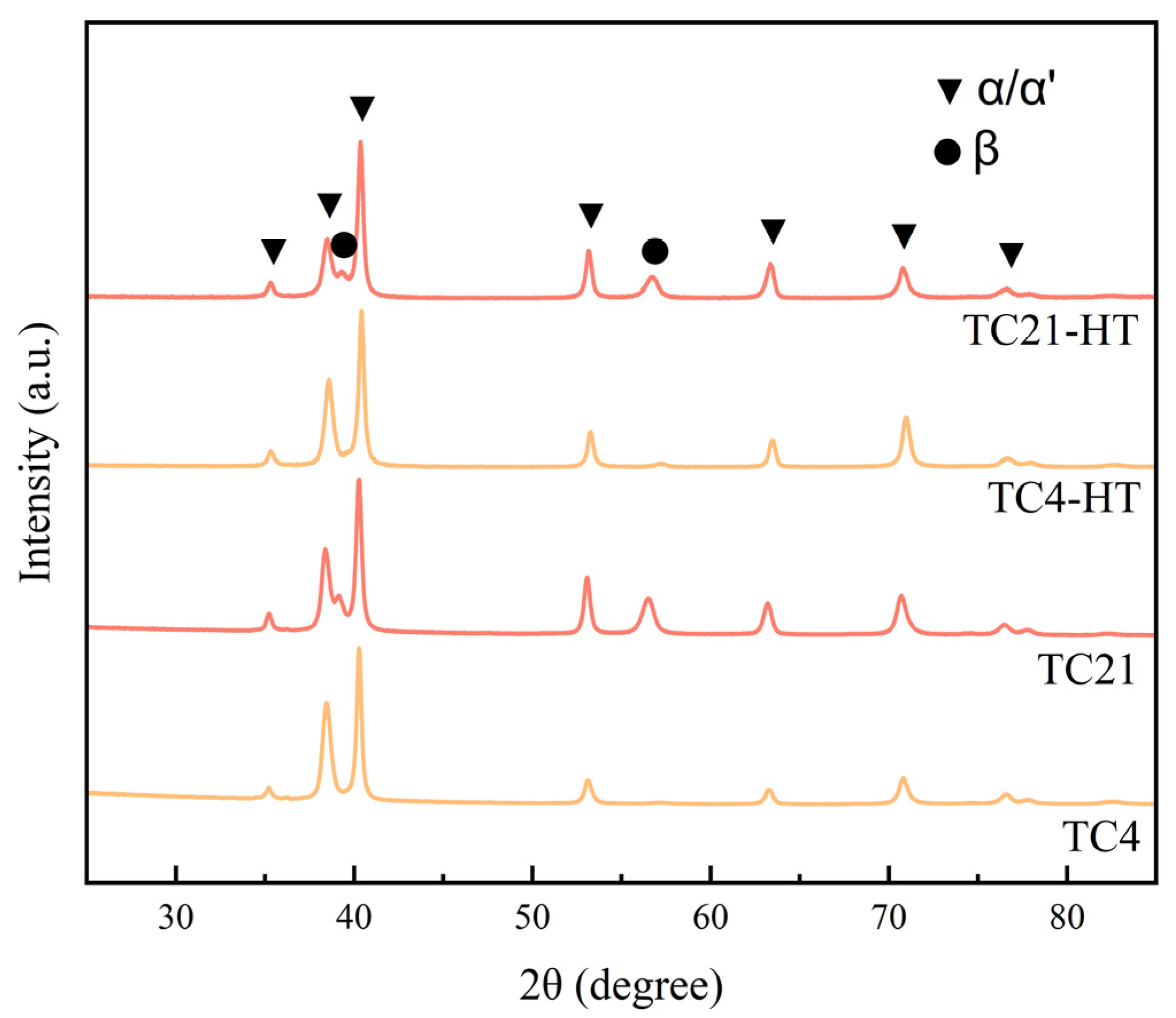
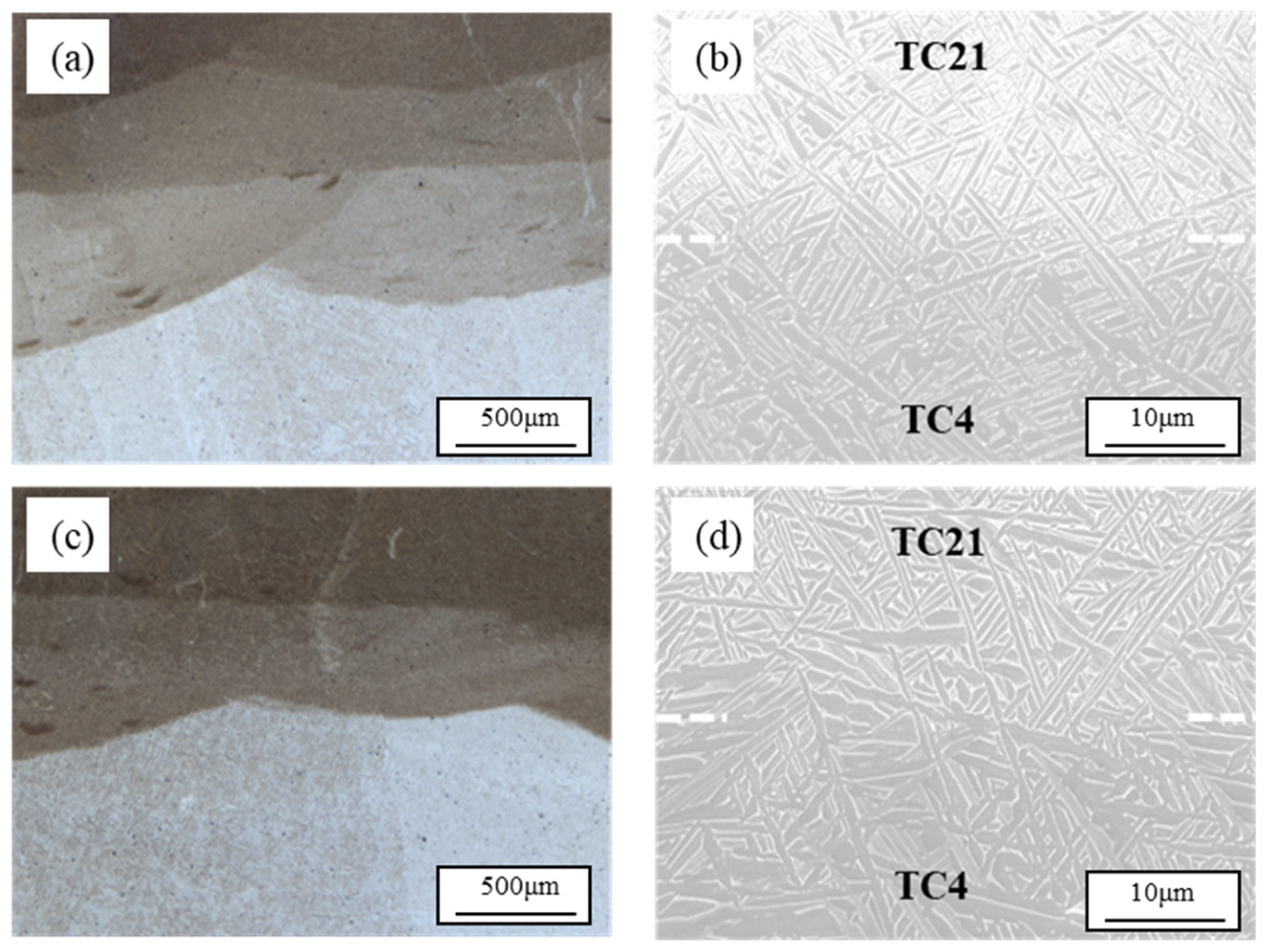

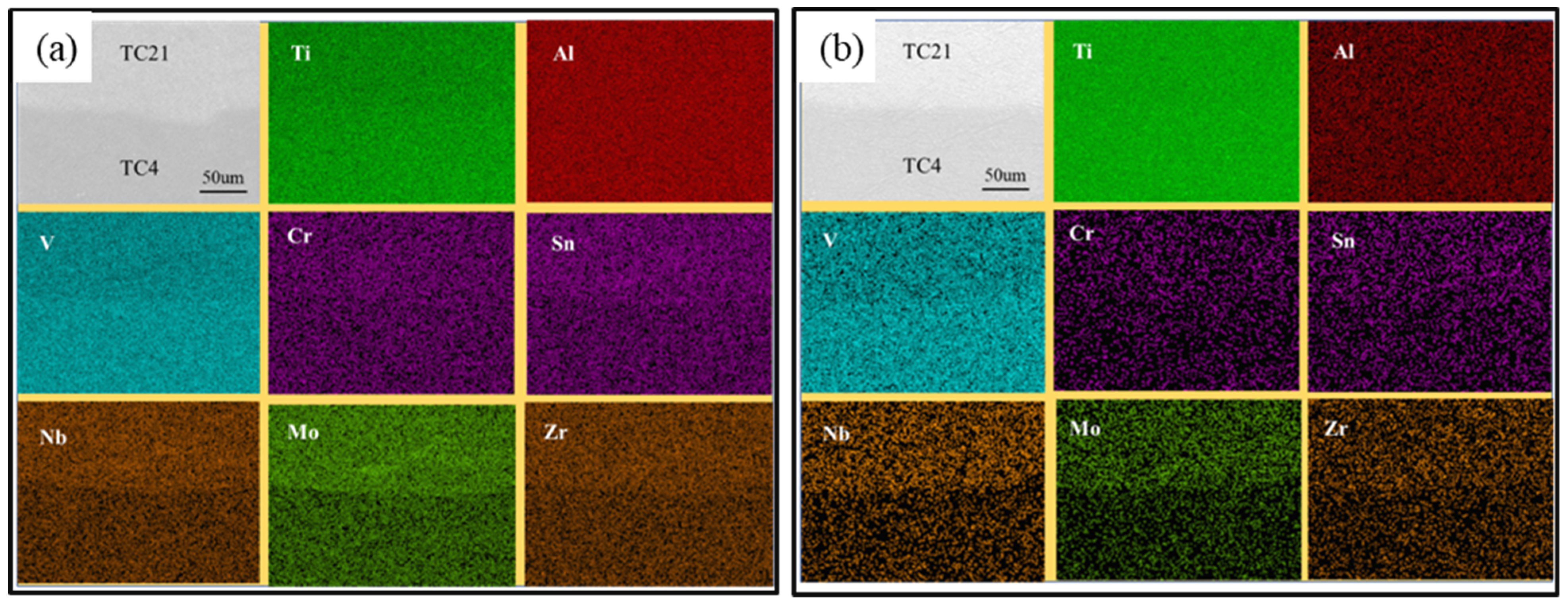


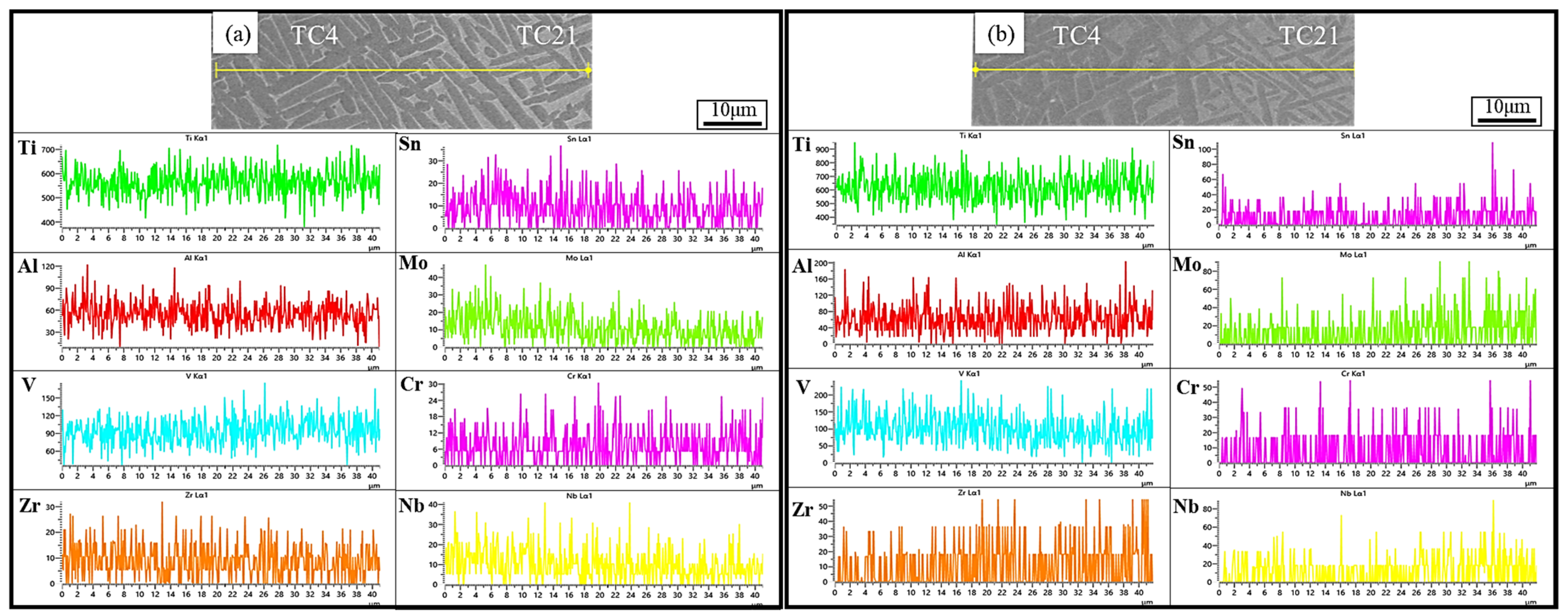
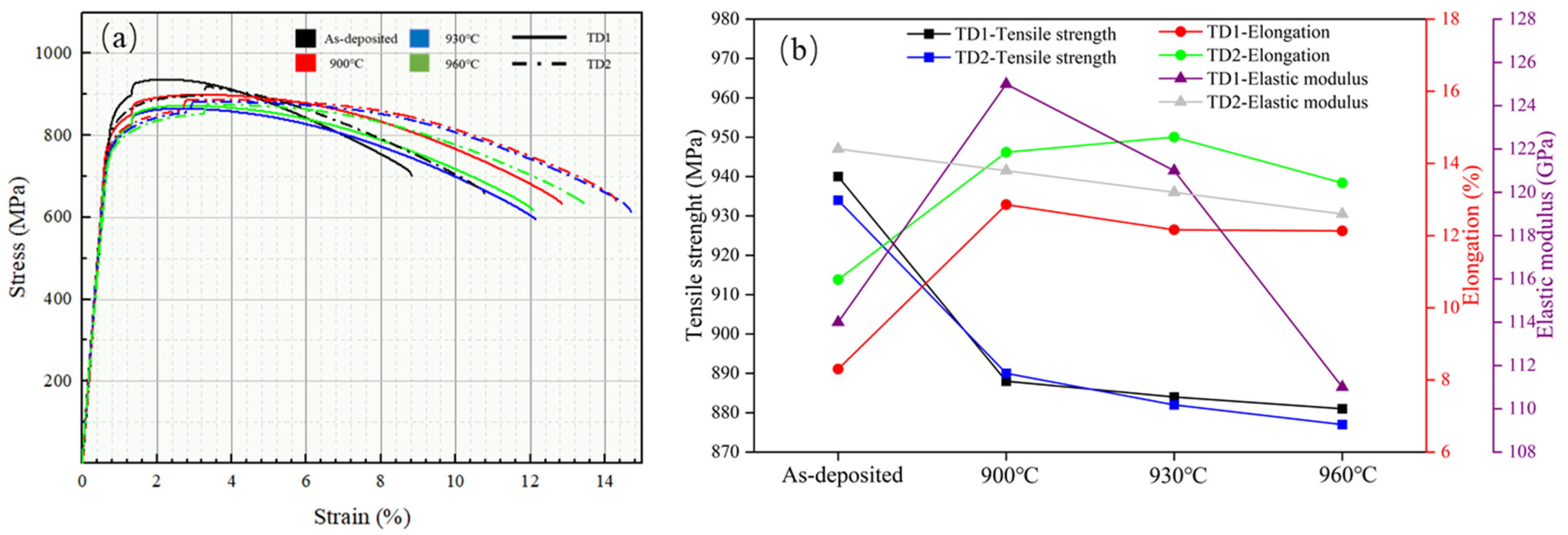
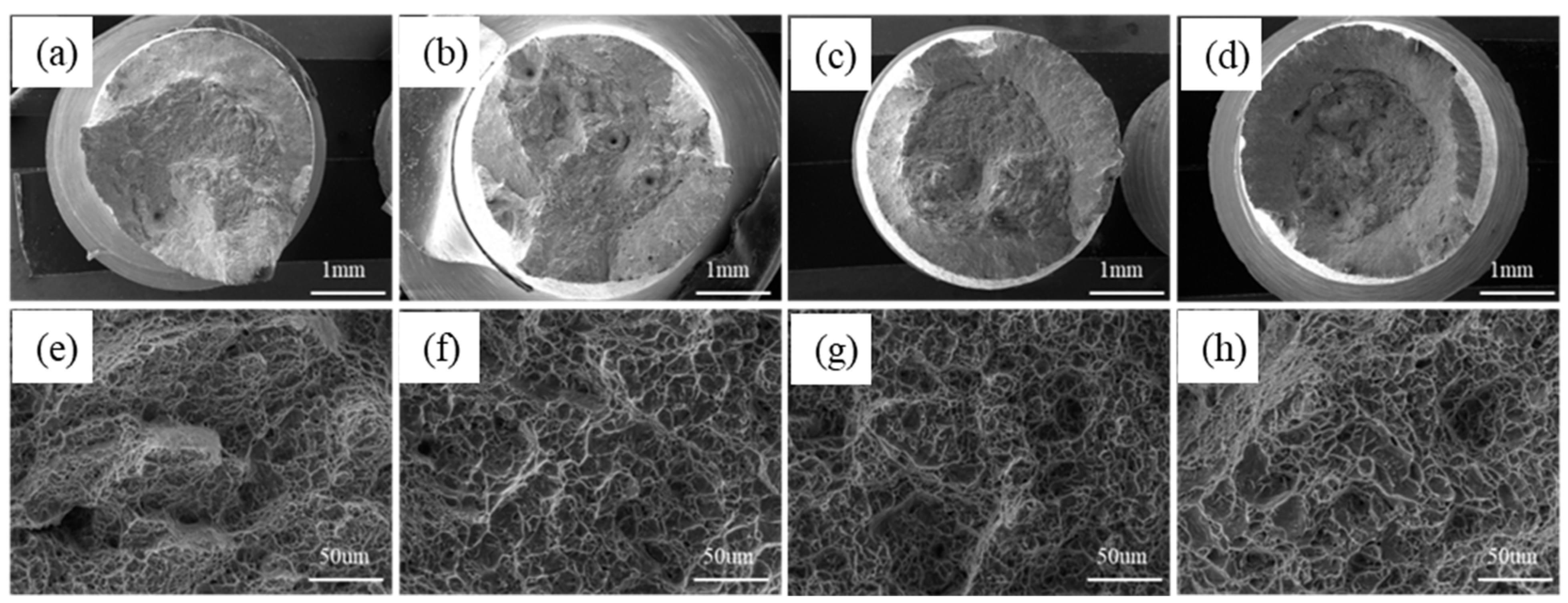
| Element | Al | V | Zr | Sn | Mo | Gr | Nb | N | H | O | Ti |
|---|---|---|---|---|---|---|---|---|---|---|---|
| TC4ELI | 6.00 | 4.07 | - | - | - | - | - | 0.0082 | <0.002 | 0.086 | Bal. |
| TC21 | 6.48 | - | 1.96 | 2.07 | 2.99 | 1.47 | 2.04 | 0.0036 | <0.002 | 0.10 | Bal. |
| LDM Conditions | Parameters |
|---|---|
| Laser power | 1700 W |
| Scanning speed | 800 mm/min |
| Spot diameter | 4 mm |
| Powder-feeding rate | 13.3 g/min |
| Layer thickness | 0.45 mm |
| Sample | Heat Treatment |
|---|---|
| TD1 | 900 °C × 2 h/AC + 500 °C × 5 h/AC |
| 930 °C × 2 h/AC + 500 °C × 5 h/AC | |
| 960 °C × 2 h/AC + 500 °C × 5 h/AC | |
| TD2 | 900 °C × 2 h/AC + 500 °C × 5 h/AC |
| 930 °C × 2 h/AC + 500 °C × 5 h/AC | |
| 960 °C × 2 h/AC + 500 °C × 5 h/AC |
Disclaimer/Publisher’s Note: The statements, opinions and data contained in all publications are solely those of the individual author(s) and contributor(s) and not of MDPI and/or the editor(s). MDPI and/or the editor(s) disclaim responsibility for any injury to people or property resulting from any ideas, methods, instructions or products referred to in the content. |
© 2024 by the authors. Licensee MDPI, Basel, Switzerland. This article is an open access article distributed under the terms and conditions of the Creative Commons Attribution (CC BY) license (https://creativecommons.org/licenses/by/4.0/).
Share and Cite
Cui, C.; Ji, H.; Han, S.; Xuan, M.; Wu, B.; Li, P.; Meng, Q. Study on Microstructure and Properties of Additive-Manufactured TC4ELI+TC21 Titanium Alloy Gradient Composite Structures. Coatings 2024, 14, 104. https://doi.org/10.3390/coatings14010104
Cui C, Ji H, Han S, Xuan M, Wu B, Li P, Meng Q. Study on Microstructure and Properties of Additive-Manufactured TC4ELI+TC21 Titanium Alloy Gradient Composite Structures. Coatings. 2024; 14(1):104. https://doi.org/10.3390/coatings14010104
Chicago/Turabian StyleCui, Can, Haibin Ji, Sensen Han, Minghao Xuan, Bin Wu, Pengxu Li, and Qingshi Meng. 2024. "Study on Microstructure and Properties of Additive-Manufactured TC4ELI+TC21 Titanium Alloy Gradient Composite Structures" Coatings 14, no. 1: 104. https://doi.org/10.3390/coatings14010104





